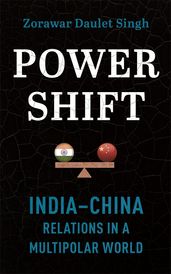Synopsis
Just like seven decades ago when the dramatic re-emergence of India and China from their traumatic encounter with colonialism, followed by a war between them in 1962, transformed this region’s geopolitical landscape, the equation of the two countries is once again poised to influence the future course of Asia. Wider interests demand that both countries craft a tenuous co-existence and stabilize a fragmenting world order. There are also circumstances that are bringing new frictions and differences to the fore as India and China pursue their regional interests and attempt to settle old scores. Although both leaderships have chosen to delicately manage this see-saw, recurring border crises have repeatedly questioned whether Delhi and Beijing can maintain such a balancing act for much longer. The emerging multipolar world has brought the relationship at a crossroads where today’s choices will set in course events that will profoundly impact India’s economy, security and the regional order. It is, therefore, critical that India’s leaders get our China policy right.
Powershift helps us make sense of a complex relationship and how India and China are learning to cope with each other’s rise on the world stage. Whether it is intricacies of the border dispute and the complicated history of their Himalayan frontier, the flux in US-China relations, the geopolitics of Greater Eurasia and the Indo-Pacific, China’s belt and road initiative and growing connectivity footprint in the region, BRICS and a changing world order, or the conundrum of formulating a far-sighted China policy, the book casts a wide net in unpacking India-China relations. Powershift provides much-needed context for Indians to start thinking more strategically and realistically about their largest neighbour.
